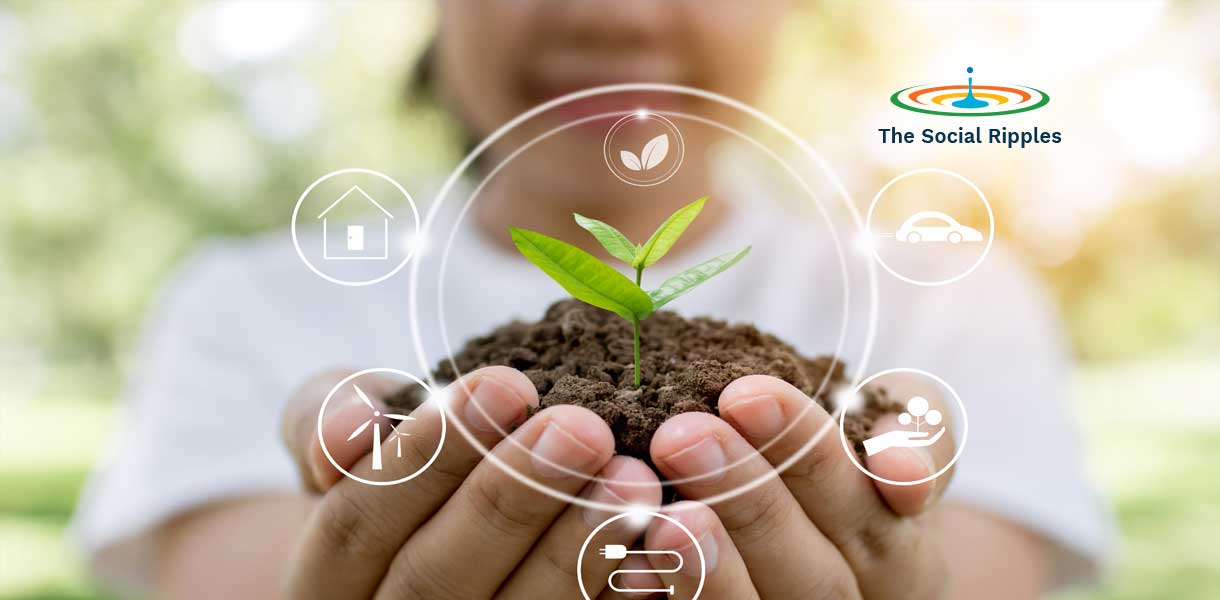
Economic, Social, And Environmental Sustainability Areas
Every coin has two sides. Years ago, there came an industrial revolution all over the world, and human beings were taking their steps towards success and development. It took them towards technological development, which is one side of the coin.
The other side of the coin is the environment, ecosystem, and society were endangered. Somewhere with development in technology, there was environmental degradation and caused various problems that led to the end of humanity. Today 40 percent of the world population is facing problems, such as lack of sanitation, no clean water to drink and poverty, etc. Hence; there was an immediate need for the time to change the face of society where people could live with sustainability.
Understanding the need and actual definition of development The United Nations came up with the cause of sustainable social development and formed the 17 sustainable development goals that are needed to be achieved by 2030.
What is sustainability?
Sustainability is a broader term that refers to the process of meeting our own needs without compromising the ability of future generations to meet their own needs. At the social ripples, which is an initiative towards sustainable social development, they say that sustainability is not only defined as the conservation and protection of the environment and natural resources. We also need social and economic resources to lead a sustainable life. Sustainable social development is an integration of social equity and economic development.
Hence we can say that sustainability consists of the three pillars of development they are social, economic, and environmental sustainability. We cannot think of sustainable social development without these three pillars.
Social sustainability:
It is the process for creating sustainable, successful places that promote well-being by understanding the needs of people from the places they live and work. Social sustainability is a combination of formal and informal processes that involve infrastructure to support the cultural and social life of the people. It generates an environment feasible for social engagement and space for people and spaces to evolve. It promotes the health and well-being of the people by giving them equal opportunities and access to the resources to support their families socially and economically.
Economic sustainability:
It refers to the practices that support long-term economic growth without negatively impacting the social, environmental, and cultural aspects of the community. Economic sustainability is all about giving people what they want without compromising the quality of life, especially in the developing world.
Environmental sustainability:
It is the process of meeting the needs of air, food, water, and shelter as well as ensuring that the environment is neither affected nor polluted. With the conservation of all the energy and natural resources, environmental sustainability can be attained. With the economic sustainability ecological system is maintained and all the environmental terms are kept in balance. Natural resources are consumed by humans, taking care that they are preserved, for future generations.
Sustainability is all about keeping these three pillars in balance. It is important to understand their interdependencies.
Dr, Lopamudra Priyadarshini with her vision towards sustainable social development believes that to bring sustainable development there should be a balance between these three pillars of development. It will give rise to a healthy and inclusive environment where people would like to live.
Examples of sustainability
Using the following examples of sustainability, we can protect and enhance environmental conditions. That will help us to retain social and economic sustainability.
Wind energy
Using the power of wind can help us to generate a lot of energy. It will also be an effective usage of the natural resource 'wind' The energy generated from windmills is less expensive than energy generated from coal. Also, it will be helpful to preserve coal for other purposes. Wind turbines are a great solution for power generation and also it occupies less amount of land.
Solar energy
A solar farm can reduce around 94 percent of emissions than that of coal power plants. It also eliminates hazardous emissions. The rooftop solar panels and solar farms have the same capacity as that of the conventional power plants. As there is a rise in awareness of change in the environment the price of the technology is decreasing and hence, anybody can afford solar panels which are a renewable energy resource.
Crop rotation
With the increase in industrial agriculture that is a bulk of the crop is produced on the same land using harmful chemicals and pesticides, the quality of soil is also decreasing. Also due to the mono agriculture technique, the quality of soil is reducing. Hence, instead of using mono-crop agriculture successive planting of different crops. It will help in retaining the quality of the soil as it prevents the soil from erosion.
Water-efficient fixtures
It is seen that in societies and buildings there was immense wastage of water. Hence there was a need for water-efficient fixtures. We can use the eater fixtures such as low-flow taps and showerheads, dual flush toilets and toilet stops, etc. these are affordable and efficient in saving the water considerably.
Green spaces
Green spaces such as forests, parks, lakes, and rivers play the role of coolant for the cities. Hence, there should be an increase in the greenery around us. According to WHO people have an increased rate of health problems. Most of the health problems are related to less walking. People are using vehicles even for going on short distances. Hence, there is an increase in pollution and global warming. We should consider walking for short distances and use public transport most of the time to avoid an increase in pollution.
At the social ripples, their team focuses on generating awareness within the people about the importance of the green environment and also promotes various measures that will help people to maintain their social and economic well-being to achieve social sustainable development. The goal of sustainable social development is aligned with the United Nations' sustainable development goals.







